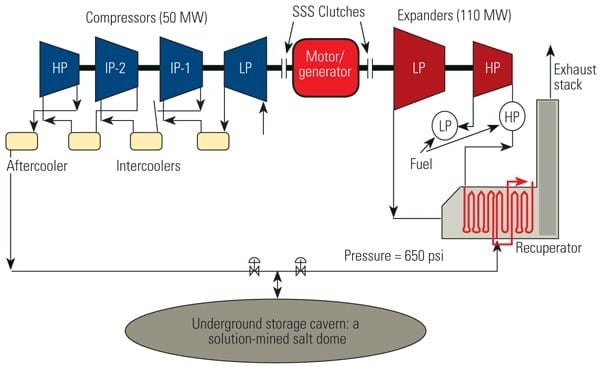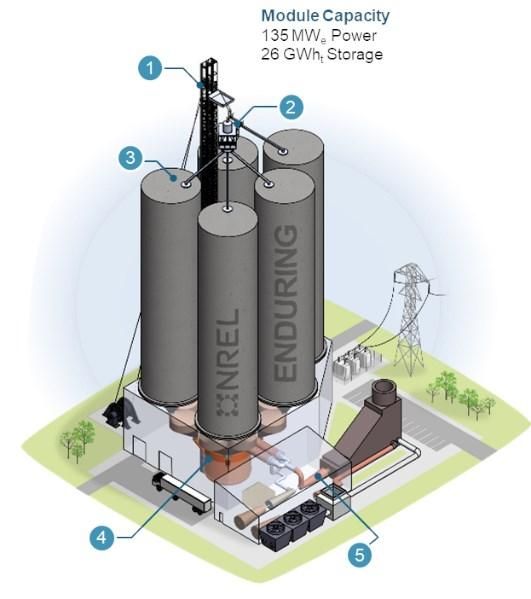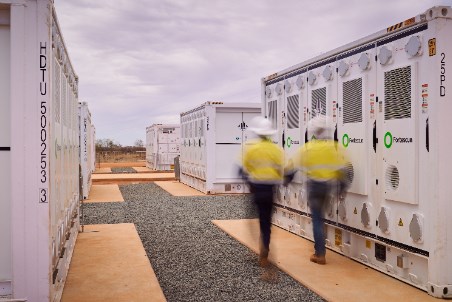Global Concentrated Solar Power (CSP) Market to Surge from US$ – openPR.com

Report on the Global Concentrated Solar Power (CSP) Market and its Contribution to Sustainable Development Goals
Introduction: CSP as a Catalyst for SDG 7 and SDG 13
The global Concentrated Solar Power (CSP) market is undergoing a significant transformation, driven by the worldwide acceleration toward clean energy adoption and carbon-neutral commitments. CSP systems, which utilize mirrors or lenses to concentrate sunlight for electricity generation, are increasingly recognized as a critical technology for achieving global sustainability targets. Specifically, CSP’s unique capacity for efficient thermal storage makes it a vital tool for advancing SDG 7 (Affordable and Clean Energy) by providing dispatchable, reliable power when sunlight is unavailable. This capability directly supports grid stability and strengthens energy security, positioning CSP as a key solution in the fight against climate change, in alignment with SDG 13 (Climate Action).
Market Dynamics and Growth Projections
Market Valuation and Forecast (2023-2034)
The global CSP market was valued at US$ 28.3 billion in 2023. It is projected to experience substantial growth, with a compound annual growth rate (CAGR) of 34.6% from 2024 to 2034. The market is forecast to reach a valuation of US$ 552.3 billion by 2034. This exponential growth reflects a global commitment to investing in sustainable infrastructure, as outlined in SDG 9 (Industry, Innovation, and Infrastructure), and a collective push to meet the targets of SDG 7 and SDG 13.
Key Growth Drivers
- Technological Progress: Advances in molten-salt thermal storage and improved heat-transfer fluids are enhancing plant efficiency and operational flexibility.
- Supportive Climate Policies: Government tenders and policies favoring dispatchable, grid-stabilizing renewables are accelerating CSP project development.
- Cost Reduction Trends: Decreasing costs for key components, such as heliostat fields, are making CSP more economically competitive with fossil-fuel alternatives.
- Integration with Hybrid Systems: The convergence of CSP with other renewable sources, like photovoltaics (PV), creates robust and reliable energy solutions.
Market Segmentation Analysis
Segmentation by Technology
The market is segmented by technology, with each type contributing to sustainable energy goals.
- Parabolic Trough Systems: The most mature and widely deployed technology.
- Power Towers: Rapidly gaining market share due to higher efficiency and superior thermal storage capabilities, which enhance their contribution to a stable and clean energy supply (SDG 7).
- Linear Fresnel Systems: A cost-effective alternative for large-scale plants.
- Dish-Stirling Technology: A highly efficient but less common technology for smaller-scale applications.
Segmentation by Application
CSP applications extend beyond electricity generation, contributing to multiple SDGs.
- Electricity Generation: The primary application, directly advancing SDG 7 by providing clean, baseload power.
- Industrial Process Heating: An emerging application that supports the decarbonization of manufacturing and industrial sectors, contributing to SDG 9 and SDG 13.
- Desalination: Provides a sustainable method for producing fresh water, addressing SDG 6 (Clean Water and Sanitation) in arid regions.
- Enhanced Oil Recovery (EOR): Utilizes solar thermal energy in the fossil fuel extraction process.
Regional Analysis and SDG Implementation
The adoption of CSP varies globally, reflecting regional priorities in achieving the Sustainable Development Goals.
- Middle East & Africa (MEA): This region is the global leader, with nations like the UAE, Saudi Arabia, and Morocco investing in massive CSP projects to meet national renewable energy targets, directly supporting SDG 7 and building resilient infrastructure (SDG 9).
- Asia-Pacific: Led by China, this region is leveraging CSP for large-scale power generation and industrial heat applications, contributing significantly to regional decarbonization efforts under SDG 13.
- Europe: Spain continues to be a center for technological innovation, particularly in next-generation molten-salt storage systems that enhance the reliability of renewable energy, a key goal of SDG 7.
- North America: The United States is expanding its CSP capacity through hybrid solar-storage plants and research initiatives aimed at reducing costs, making clean energy more accessible.
- Latin America: Chile presents significant potential for using CSP to supply high-temperature thermal energy to its industrial sector, facilitating a transition away from fossil fuels in alignment with SDG 9.
Key Market Trends and Innovations
Several transformative trends are shaping the CSP market, further aligning it with global sustainability objectives.
- Hybrid CSP-PV Storage Systems: The integration of CSP’s dispatchability with PV’s cost-effectiveness provides a stable and affordable energy output, crucial for building sustainable cities and communities (SDG 11).
- Advanced Thermal Storage: Innovations in molten-salt storage are enabling longer energy retention, positioning CSP as a viable clean alternative to fossil-fuel baseload power, directly supporting SDG 7.
- Digitalization and AI: The use of AI for heliostat field optimization and automated maintenance is reducing operational costs and improving plant performance, making clean energy more affordable.
- Industrial Decarbonization: The growing adoption of CSP for industrial heat applications is a critical trend for reducing emissions in hard-to-abate sectors, advancing both SDG 9 and SDG 13.
Competitive Landscape
Key Market Participants
- Abengoa
- Acciona S.A.
- ACWA Power
- BrightSource Energy, Inc.
- Atlantica Yield PLC
- NextEra Energy Resources, LLC
Strategic Focus
The competitive environment is characterized by a focus on technological innovation, cost reduction, and the development of superior thermal storage solutions. Strategic collaborations between developers, governments, and financial institutions are essential for de-risking capital-intensive projects and securing long-term agreements, thereby accelerating the deployment of infrastructure critical for achieving the SDGs.
Future Outlook: CSP’s Role in a Decarbonized Global Economy
The outlook for the CSP market is exceptionally positive. The technology is projected to play a pivotal role in the global energy transition by complementing intermittent renewable sources and fulfilling baseload power demand. As innovation continues to enhance efficiency and reduce costs, CSP is expected to become a mainstream power solution, particularly in high-irradiation regions. The market’s expansion through 2034 will represent a significant contribution to global decarbonization, directly supporting the long-term objectives of SDG 7 (Affordable and Clean Energy), SDG 9 (Industry, Innovation, and Infrastructure), and SDG 13 (Climate Action).
Analysis of Sustainable Development Goals in the Article
1. Which SDGs are addressed or connected to the issues highlighted in the article?
The article on the Concentrated Solar Power (CSP) market directly addresses and connects to several Sustainable Development Goals (SDGs) by focusing on the global shift towards clean energy, technological innovation, economic growth, and climate action.
- SDG 7: Affordable and Clean Energy: This is the most prominent SDG in the article. The entire text is dedicated to CSP, a renewable energy technology that generates electricity from sunlight. It discusses its role in “clean energy adoption,” its function as a “clean alternative to fossil-fuel-based baseload power,” and its contribution to “utility-scale renewable energy portfolios.”
- SDG 13: Climate Action: The article explicitly links the growth of the CSP market to global efforts to combat climate change. It mentions “carbon-neutral commitments,” the goal to “decarbonize thermal processes,” and the role of CSP in supporting “national renewable strategies” that are part of broader climate policies.
- SDG 9: Industry, Innovation, and Infrastructure: The article highlights significant technological advancements and infrastructural development within the CSP sector. It details “advances in molten-salt storage,” “innovative plant designs,” “AI-driven heliostat field optimization,” and the construction of “massive CSP complexes,” all of which fall under this goal.
- SDG 8: Decent Work and Economic Growth: The article describes a rapidly expanding global market, which implies significant economic growth and job creation. It projects the market value to grow from “US$ 28.3 billion in 2023” to “US$ 552.3 billion by 2034” at an “unprecedented CAGR of 34.6%,” indicating substantial economic activity and investment.
- SDG 12: Responsible Consumption and Production: By promoting a shift away from fossil fuels towards a renewable source like solar power, the article touches upon the core principle of this SDG. The adoption of CSP for “electricity generation” and “industrial process heating” represents a move towards more sustainable production patterns.
2. What specific targets under those SDGs can be identified based on the article’s content?
Based on the article’s discussion of the CSP market, several specific SDG targets can be identified:
- Target 7.2: By 2030, increase substantially the share of renewable energy in the global energy mix. The article’s central theme is the “remarkable expansion” and “exponential growth” of CSP, a renewable energy source. It describes how CSP is becoming a “critical tool in utility-scale renewable energy portfolios” and a “mainstream power solution,” directly contributing to this target.
- Target 7.a: By 2030, enhance international cooperation to facilitate access to clean energy research and technology… and promote investment in energy infrastructure and clean energy technology. The article mentions “larger investment flows,” partnerships with “global financial institutions,” and a competitive landscape with “multinational developers.” The regional analysis covering the Middle East, Africa, Asia-Pacific, Europe, and the Americas also points to international activity and investment in CSP technology and infrastructure.
- Target 13.2: Integrate climate change measures into national policies, strategies and planning. The article notes that market growth is driven by “climate policies” and that countries in the Middle East and Africa are investing in CSP to “support national renewable strategies,” which are key components of integrating climate action into national planning.
- Target 9.4: By 2030, upgrade infrastructure and retrofit industries to make them sustainable… with greater adoption of clean and environmentally sound technologies. The article discusses the use of CSP for “industrial process heating” and “desalination,” and notes that industrial sectors are seeking CSP to “offset fossil fuel consumption” and “decarbonize thermal processes,” directly aligning with the goal of making industries more sustainable.
- Target 9.5: Enhance scientific research, upgrade the technological capabilities of industrial sectors… and encourage innovation. The text is replete with examples of innovation, such as “advances in molten-salt storage,” “improved heat-transfer fluids,” “AI-driven heliostat field optimization,” and “next-generation receivers,” all of which contribute to upgrading technological capabilities.
3. Are there any indicators mentioned or implied in the article that can be used to measure progress towards the identified targets?
Yes, the article provides several quantitative and qualitative indicators that can be used to measure progress towards the identified targets.
- Market Value and Growth Rate: The projection of the CSP market’s value increasing from “US$ 28.3 billion in 2023” to “US$ 552.3 billion by 2034” and the “CAGR of 34.6%” are direct financial indicators of the increasing investment in and adoption of clean energy technology (relevant for Targets 7.2 and 7.a).
- Investment and Project Scale: The mention of “utility-scale installations exceeding 200 MW,” “massive CSP complexes,” and “larger investment flows” serve as indicators of the scale of infrastructure development and financial commitment to renewable energy (relevant for Targets 7.a and 9.4).
- Technological Advancements: The specific mention of innovations like “molten-salt storage,” “hybrid CSP-PV storage systems,” “AI-driven heliostat field optimization,” and “digital twins” are qualitative indicators of progress in research and technological capability (relevant for Target 9.5).
- Policy and Strategy Implementation: The reference to “policy support for grid-stabilizing renewables” and “national renewable strategies” in various countries acts as an indicator of the integration of climate change measures into national planning (relevant for Target 13.2).
- Industrial Adoption: The emerging trend of using CSP for “industrial process heating,” “enhanced oil recovery (EOR),” and “desalination” is a clear indicator of the technology’s adoption by industries to become more sustainable (relevant for Target 9.4).
4. Table of SDGs, Targets, and Indicators
| SDGs | Targets | Indicators |
|---|---|---|
| SDG 7: Affordable and Clean Energy | 7.2: Increase substantially the share of renewable energy in the global energy mix. |
|
| SDG 13: Climate Action | 13.2: Integrate climate change measures into national policies, strategies and planning. |
|
| SDG 9: Industry, Innovation, and Infrastructure | 9.4: Upgrade infrastructure and retrofit industries to make them sustainable… with greater adoption of clean technologies. |
|
| SDG 9: Industry, Innovation, and Infrastructure | 9.5: Enhance scientific research, upgrade the technological capabilities… and encourage innovation. |
|
| SDG 8: Decent Work and Economic Growth | 8.2: Achieve higher levels of economic productivity through… technological upgrading and innovation. |
|
Source: openpr.com
What is Your Reaction?
 Like
0
Like
0
 Dislike
0
Dislike
0
 Love
0
Love
0
 Funny
0
Funny
0
 Angry
0
Angry
0
 Sad
0
Sad
0
 Wow
0
Wow
0
















































:focal(1500,1000)/https://media.globalcitizen.org/a6/9a/a69a4720-d8a1-4715-b596-18738d03c05c/rotary_polio_hero_image.jpg?#)







/countries/sri-lanka/photo-credit---dmc-sri-lanka.tmb-1200v.jpg?sfvrsn=dc298bcc_1#)


















